A lot of the ruins of Greek and Roman stages can be found around the Mediterranean. Greek theaters were big open-air buildings that were built on the side of a hill. Roman theaters were heavily inspired by Greek theaters, but they are also different in some ways, like being built on their own supports.
In the city-state of Athens, the theater was used for events celebrating the god Dionysus and the famous tragedy, comedy, and satyr plays from that time. Since the Romans were not as intellectual as the Greeks, they wanted more pure entertainment with lots of laughs and fun.
During Roman times, people liked to watch animal fights, jugglers, mime shows, and gladiator fights, though the latter two were more popular in the amphitheater.
The following is a list of some of the most impressive and well-preserved Greek and Roman theaters from ancient times. There is a long list at Whitman College of almost all of the historical theaters that are still known today.
11 Ancient Greek and Roman Theatres in Time
1. Jerash Theatres
Only Petra is a more well-known archaeological site in Jordan than Jerash. During the city’s golden age, it was ruled by the Romans. Today, the place is seen as one of the best-preserved Roman regional towns in the world. There are not one but two Roman theaters in Jerash.
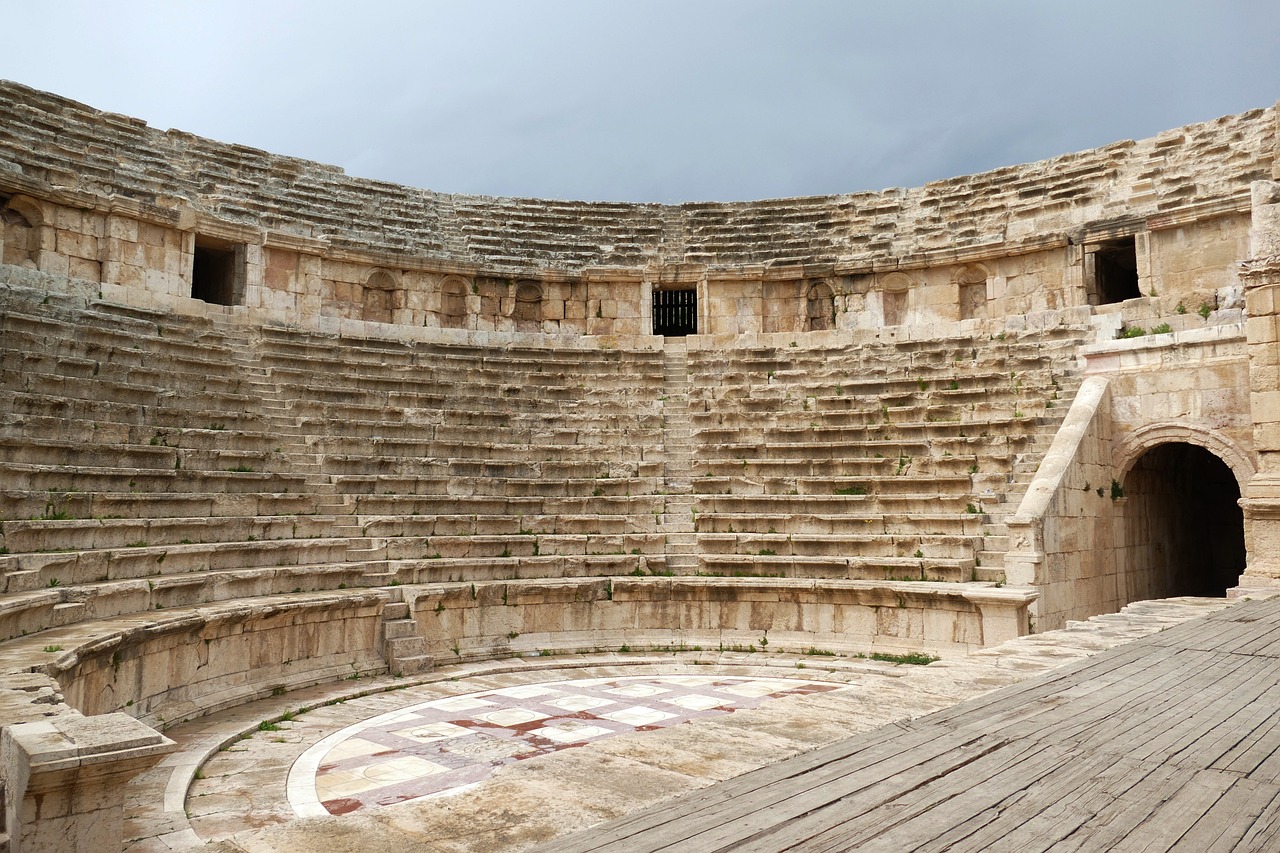
The 1600-seat north theater was built in 165 AD and was mostly used as the city council hall. The bigger south theater, which could hold more than 3,000 people, was built between 90 and 92 AD.
2. Roman Theatre of Merida
The Roman Theater of Merida in what is now Spain was built in 16 BC on the orders of Agrippa, who was a general and friend of Emperor Augustus. Up to 6,000 people could fit in the old theater. In later centuries, the theater went through several renovations that added new architectural features and decorations. In the 1960s and 1970s, the building was fixed up to its present state.
3. Greco-Roman Theatre
A Greek settlement was built on the east coast of Sicily’s island, Taormina. The theater in Taormina was built by the Greeks in the 2nd century BC. The Romans later fixed it up and made it bigger. The old theater is in a beautiful spot, with a view of Mount Etna and the bay of Naxos. It is now the center of the international film festival in Taormina.
4. Odeon of Herodes Atticus
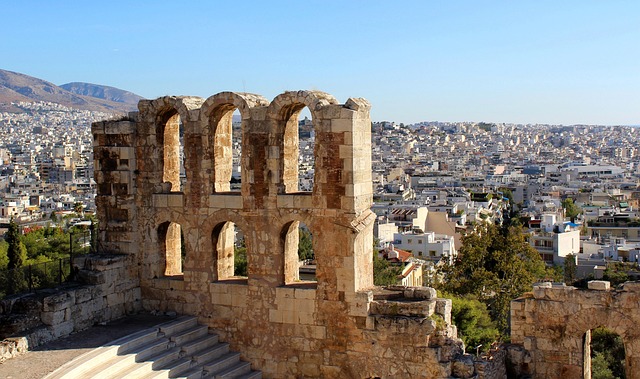
Herodes Atticus built the Odeon of Herodes Atticus in 161 AD to honor his wife. It is cut into the southern slope of the Athenian Acropolis. In ancient Athens, the building was used as a theater for plays and music events. It used to have a wooden roof and could hold up to 5,000 people.
5. Theatre of Sabratha
Sabratha is in Libya. It was founded around 500 BC as a Phoenician trade post and reached its peak under Roman rule as a port where goods from the interior of Africa could be sent to the empire. In the first century AD, the Theater of Sabratha was built.
The building looks mostly the same because Italian researchers rebuilt it in the 1930s. There were 25 doors to the theater, which could hold about 5,000 people.
6. Great Theatre of Ephesus
On the west coast of Turkey, the ruins of Ephesus are a famous place for tourists to visit. People used to love Ephesus because of the Temple of Artemis, which was one of the seven wonders of the old world. In 401 AD, the archbishop of Constantinople led a crowd that burned the temple. You can still see some of the buildings, like the impressive Great Theater.
This huge theater, which could fit up to 25,000 people, was first used for plays. Later on, during Roman times, it was also used for gladiator fights.
7. Aspendos Theatre
One of the best-preserved old theaters can be found in Aspendos. The theater of Aspendos is in the southwest of Turkey. It was built in 155 AD, during the reign of the Roman Emperor Marcus Aurelius, and could hold up to 20,000 people.
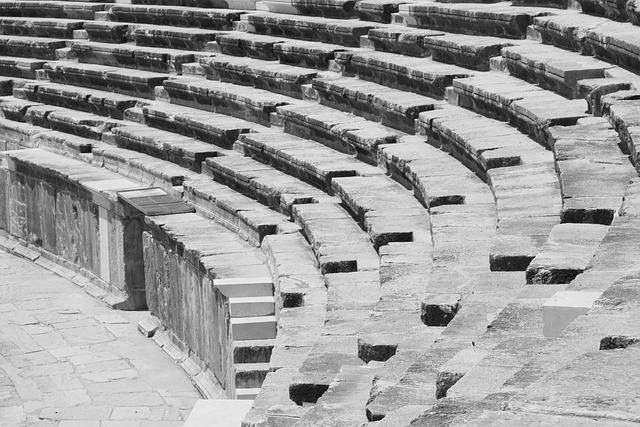
During Seljuk times, the stage area was used as a caravanserai, which is an inn on the side of the road, so it was always being fixed up. This is how the Aspendos Theatre has been able to stay open for so long without losing many of its unique traits.
8. Bosra
Bosra is an old city in Syria, 140 km south of Damascus. Egyptian hieroglyphs from the 14th century BC already talk about it. Rome took over the city in 106 AD and made it the capital of their Arabia province.
The Bosra theater was built in the year 2 AD and had room for up to 15,000 people. They built a wall around the theater, which is why it is now one of the best-preserved Roman theaters in the world.
9. Epidaurus
The theater of Epidaurus was built in the 4th century BC. It is in the northeastern part of the Peloponnesus in Greece. The Greek theater is still one of the most beautiful in the world. In Greek theaters, the view of a lush scenery behind the stage is an important part of the play itself.
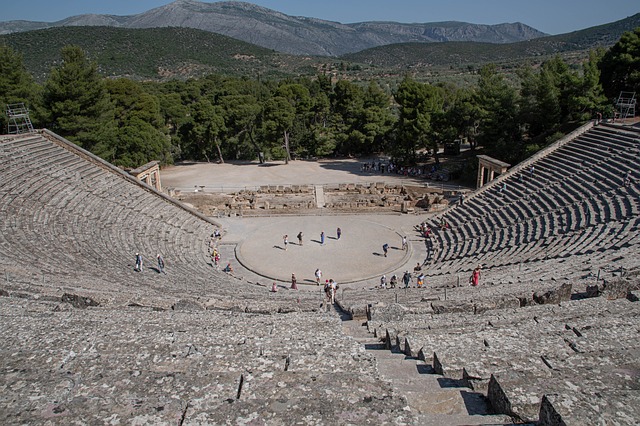
The theater in Epidaurus is famous for having great sound. All 14,000 people in the audience can clearly hear the actors on stage, no matter where they are sitting.
10. Delphi Theatre
For many years, Delphi was the most important place in Greek faith. It was where the temple and oracle of Apollo were located. In Greece, the old theater of Delphi was built on a hill so that people could see the whole sanctuary and the beautiful scenery below. It was built in the 4th century and had enough room for 5,000 people to watch.
11. Roman Theatre of Orange
The Roman Theater of Orange in France is a theater that was built in the first century AD and is still in good shape. It was used for plays. As the Roman Empire fell apart, the theater was shut down by government order in 391 AD because the Church didn’t like what it saw as “uncivilized spectacles.”
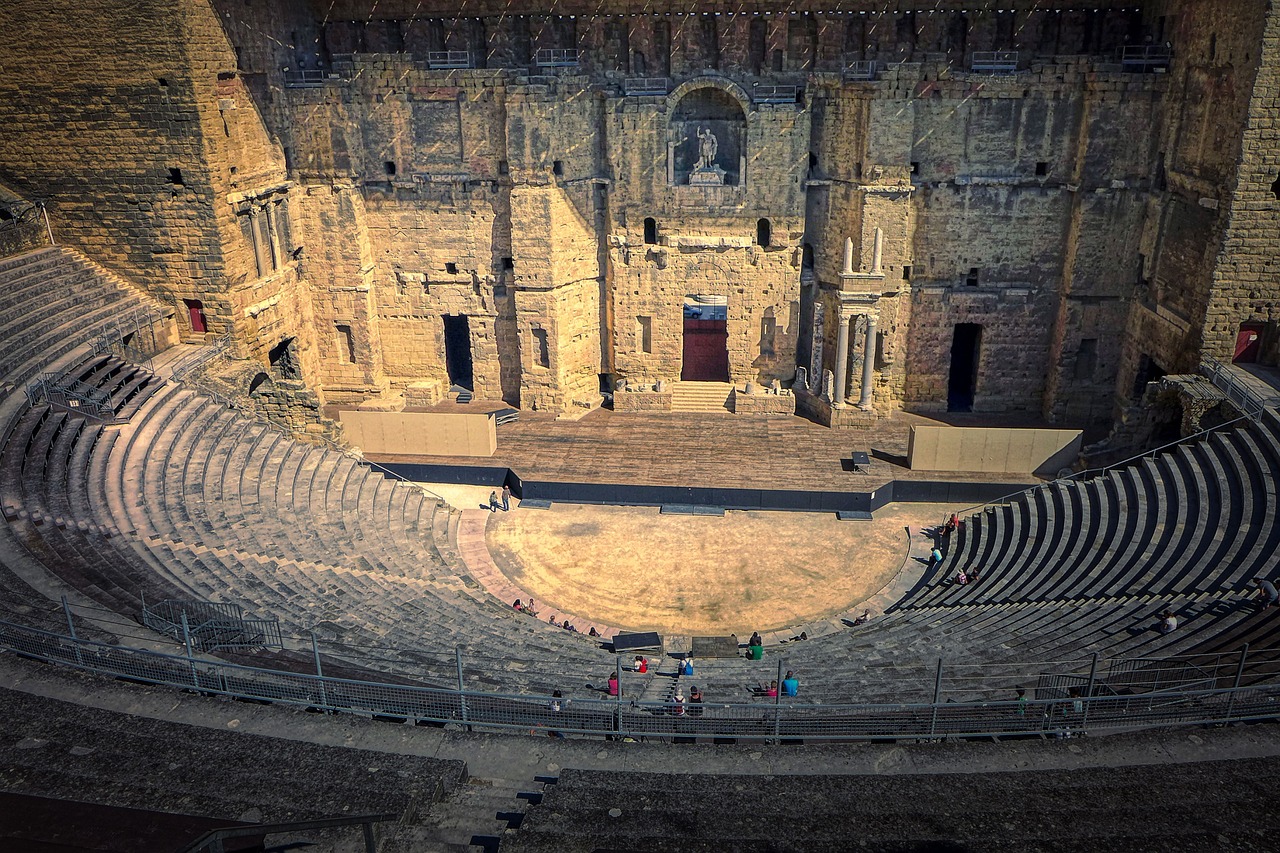
In the 1800s, the old theater was fixed up, and now it’s where the Chorégies d’Oran summer opera event takes place.
Read more: Exclusive Dhaka to Cox’s Bazar bus: Tickets, Timings, Classes | 2024




